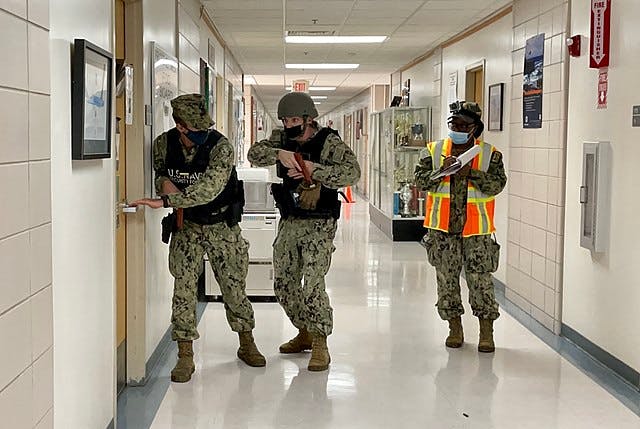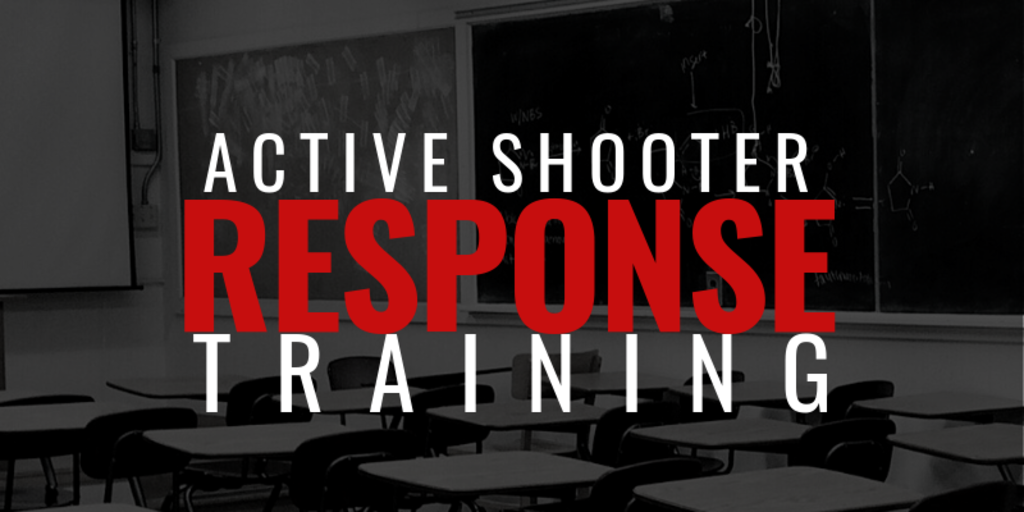The Value of Active Shooter Training in High-Risk Atmospheres
The Value of Active Shooter Training in High-Risk Atmospheres
Blog Article
Discovering the Trick Elements and Purposes of Effective Active Shooter Training Programs
Active shooter training programs are crucial in gearing up people and companies with the needed skills to react effectively to potential dangers. As we discover the complexities of these training programs, it becomes apparent that comprehending their comprehensive nature is vital to enhancing safety measures and action capacities.
Importance of Energetic Shooter Training
Active shooter training programs are critical for boosting readiness and reaction despite possible risks. These programs intend to gear up individuals, organizations, and areas with the knowledge and abilities necessary to effectively reply to active shooter scenarios. The boosting regularity and severity of such events emphasize the value of aggressive measures, as prompt and enlightened feedbacks can significantly reduce damage.

Furthermore, these programs can help ease the anxiety and concern that often accompany conversations regarding possible dangers. By giving organized advice and functional approaches, individuals get confidence in their capability to respond appropriately. Inevitably, the importance of active shooter training lies in its prospective to conserve lives, reduce injuries, and grow a prepared and durable area with the ability of encountering unexpected challenges.
Key Elements of Training Programs
Reliable energetic shooter training programs generally incorporate numerous key components made to prepare individuals for real-world situations. The very first element is comprehensive education on the nature of active shooter cases, including statistics, situation researches, and psychological elements that influence assailants. This theoretical foundation is crucial for cultivating recognition and understanding amongst participants.
Following, programs frequently consist of training on personal security procedures, emphasizing the "Run, Hide, Battle" strategy. Individuals discover exactly how to assess their setting, make quick decisions, and take proper actions during a situation. Furthermore, the addition of efficient interaction abilities is vital, as participants must recognize exactly how to report events and share vital info with police.
One more important element is the involvement of regulation enforcement or protection professionals, who provide insights into tactical actions and the relevance of collaboration during a crisis. Furthermore, programs must attend to the psychological results of an active shooter scenario, using approaches for coping and recuperation.
Lastly, continuous training and correspondence course are vital to guarantee that knowledge stays present and participants feel great in their capacities. With each other, these essential components produce a well-rounded training program that furnishes individuals to react effectively to an active shooter event.
Realistic Circumstance Simulations
Practical situation simulations are a critical element of active shooter training programs, giving participants with the possibility to take part in hands-on technique that mirrors possible real-life scenarios. These simulations enhance the training experience by producing an immersive setting where people can use academic expertise in practical setups.
Through the usage of role-playing, simulated circumstances, and specialized training facilities, individuals experience the immediate difficulties and stress factors related to an active shooter event. This approach of training advertises quick decision-making, team effort, and the application of safety procedures under pressure. It allows responders to establish critical abilities such as situational recognition, risk evaluation, and efficient emptying treatments.
Additionally, realistic simulations help to identify prospective weaknesses in individuals' reactions, making it possible for instructors to provide targeted responses and improve general readiness. The consolidation of varying circumstances, including different locations and enemy accounts, further enhances the training experience, ensuring that participants are fully equipped to take care of a series of possible situations.
Eventually, these simulations serve not only to instruct but likewise to construct confidence amongst individuals, cultivating a feeling of preparedness that is necessary for effective emergency feedback in the face of an active shooter hazard. active shooter training.
Communication Techniques in Training
Clear interaction is crucial in active shooter training programs, as it straight affects the performance of reaction initiatives during a dilemma. Training individuals need to understand the procedures and treatments that will certainly direct their actions if confronted with an energetic shooter circumstance. Developing clear lines of interaction ensures that all people entailed can communicate information without delay and properly.

In addition, training programs should highlight the value of energetic listening. Ultimately, reliable interaction approaches are crucial for preparing individuals to respond emphatically and cohesively in the face of an energetic shooter event.
Mental Readiness Techniques
Psychological preparedness strategies are progressively recognized as important components of active shooter training programs. These techniques aim to furnish individuals with the mental strength essential to respond efficiently in high-stress circumstances. By promoting a frame of mind in harmony with possible dangers, individuals can much better take care of concern, stress and anxiety, and complication during critical events.
Key mental preparedness techniques consist of scenario-based training and tension inoculation exercises. Scenario-based training immerses participants in practical simulations that simulate the turmoil of an energetic shooter event, permitting them to exercise decision-making under pressure. This exposure helps build knowledge with emergency situation protocols, enhancing natural responses.
Stress and anxiety shot involves steady direct exposure to stress-inducing circumstances, permitting individuals to develop coping mechanisms. This can include breathing workouts, visualization strategies, and cognitive restructuring to reframe negative ideas. By integrating these strategies, training programs can grow a feeling of confidence and control, which is vital in situation circumstances.
Additionally, post-incident psychological support is critical to address the psychological results of an active shooter event. Integrating mental health and wellness sources right into training programs not only prepares individuals for prompt reactions yet additionally advertises lasting emotional wellness, ultimately contributing to a more secure and extra resistant atmosphere.
Conclusion

Report this page